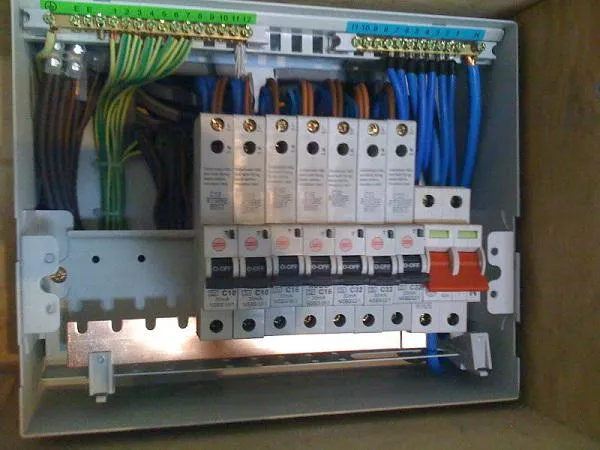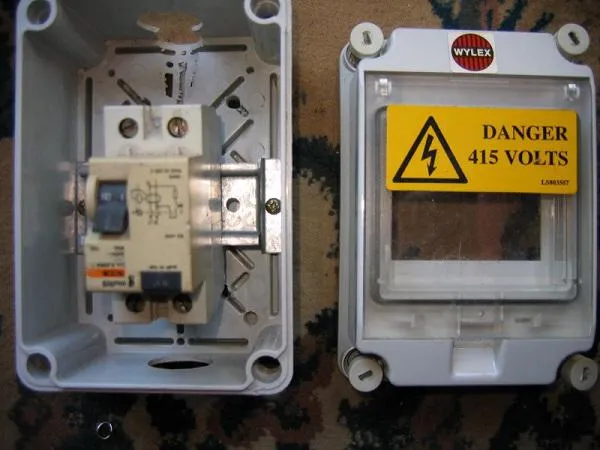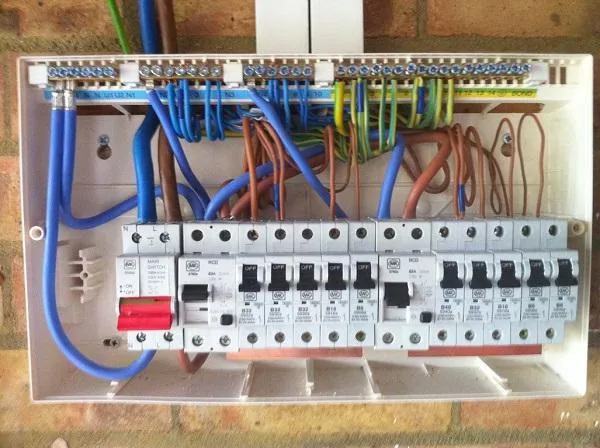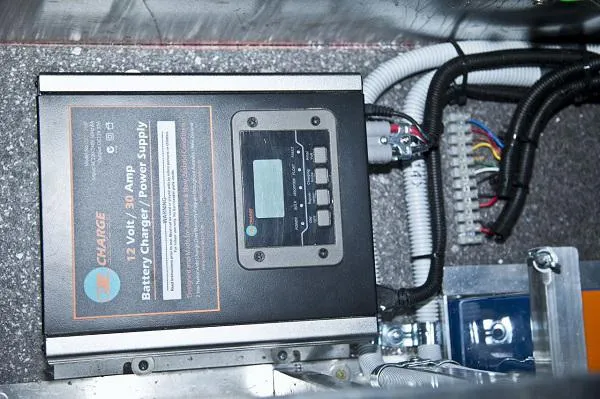Home electrical is a rather complex and varied topic, and every homeowner should know the basic details, since not only financial costs, but also the safety of your home depend on it. In this article we will try to find out which is better – a difavtomat or an RCD.
Introduction to the topic, or what is a difavtomat?
To understand this issue, let’s first try to define the basic concepts. So, difavtomat.
The so-called device successfully combines the functions of both an RCD and a conventional one; it protects a person in case of touching exposed areas of a conductive part of a wire or those parts of electrical networks that are energized due to damage to the wiring or other similar factors. Today there are a huge number of such devices, which are designed for both different operating currents and different leakage currents.
Its main distinguishing feature is that it consists of two well-separated functional parts: a circuit breaker (two or four poles), as well as an electric shock protection module. The difavtomat should be installed exclusively on a mounting DIN rail, and this design takes up much less space than a combination of an RCD and a circuit breaker.
Considering the response time, which is only 0.04 seconds, differential circuit breakers provide the most adequate protection against electric shock to a person in almost any operating condition. It is also important that the differential machine qualitatively protects devices in the network from overloads that inevitably arise during various types of emergencies. And further. Its design ensures the fastest power outage in conditions where voltage surges more than 250 V are observed in any part of the network.
Considering the unenviable characteristics of domestic electrical networks, as well as the degree of their deterioration, the last characteristic is especially important.
The main advantages of the automatic machine
Very high response speed.
. Protection of equipment from power surges and operational overloads.
. Possibility of operation in conditions from -25 to +50 degrees Celsius.
. Huge wear resistance threshold.
What is an RCD?

We cannot ignore the second “opponent” in the debate on the topic “difavtomat or RCD”. What is an RCD?
This abbreviation stands for “residual current devices”. Triggering occurs when the presence of leakage currents is detected. Simply put, how much current came to the device through one wire, the same amount should go through another section of the wiring. If the current begins to flow to the ground or through the grounding wire, the protection is instantly activated, immediately disconnecting the network from the power source.
Such a system must (!) be installed on socket groups, as well as on boilers, washing machines and electric cookers. These types of devices do not protect (!) your equipment and wiring from system overloads or short circuits.
The last circumstance is very often not taken into account by would-be electricians, who, in order to reduce the cost of the circuit, often use only an RCD. In addition, there is also selfish interest when it is passed off as a differential machine, the cost of which is higher.
Basic information about the RCD device
What is the operating principle of an RCD? Its work is based on the response to changes in the differential current in conductors.
What is a current sensor? This is the most common transformer, but made as a toroidal core. The response threshold is set using a magnetoelectric relay, which has extremely high sensitivity.
It is important to note that all RCDs made according to this classical scheme are extremely reliable and simple devices with very high reliability and reliability.

It is necessary to warn that today there are also electronic RCDs, which are based on a special electronic circuit. A relay or circuit acts on a mechanism that opens the electrical circuit if necessary. This is what the RCD device includes.
What parts does the actuator consist of?
- From the contact group itself, set to the maximum current value.
- A spring that directly opens the circuit if any problems are observed in its operation.
If you want to check the device’s functionality yourself, just click on the “Test” button. In this case, the current is artificially supplied to the secondary winding, and the relay is triggered (should, in any case). So, if necessary, you can easily and without any costs check the serviceability of all your equipment.
Operating principle of RCD
If we talk about the normal operating mode, then the current (I1=I2) flows in an anti-parallel direction, inducing magnetic currents in the secondary winding of the transformer (Ф1=Ф2). They are the same size, due to which they mutually compensate each other. Since the current in the secondary winding in this case is virtually zero, the relay cannot operate.
RCD operation during leakage
Upon contact with conductive parts, a leakage current occurs. In this case, the current I1 is not equal to I2, and therefore a current appears in the secondary winding, the magnitude of which is sufficient to trigger the protective relay. It provokes a spring switch, and the RCD turns off.
Differences between the two protection systems
It should be noted that coverage of this issue is extremely important since even some electricians are sometimes unable to distinguish these devices from each other. However, nothing is surprising here: they are extremely similar even in photographs.
The main difference between a difavtomat and an RCD is that they are intended for slightly different purposes. We have already said this above, but we will repeat it: RCDs cannot be used to protect equipment and wiring from overload or short circuit! Moreover, it is imperative to install a circuit breaker in front of the RCD, which will save the device itself from this kind of trouble. This is the difference between an RCD and a difavtomat.
Be sure to take this into account when purchasing or consulting with especially “thoughtful” electricians who will be happy to save on your equipment.

The difavtomat is much better in this regard, because it combines both an RCD and a circuit breaker in one housing. Accordingly, this kind of device not only protects a person from electric shock, but also saves your wiring and equipment from burning out in the event of a short circuit. Thus, the RCD and the difavtomat, the difference between which we have just revealed, are somewhat diverse mechanisms.
Let us remind you once again that a differential circuit breaker can be used as a fuse in those houses where there is a constant danger of chronic overloads in the network.
This is a detailed difference between an RCD and a difavtomat. But how to make the right choice in the store? After all, we have already said that these devices are extremely similar to each other, even in photographs.
Let’s buy right!
First, pay attention to the direct name of the device itself. Today, almost all manufacturers have finally met consumers halfway, deigning to indicate on the body of the device itself information about whether it is a difavtomat or an RCD in front of you. Therefore, we would not recommend buying such Chinese-made equipment. Nosy Asians either do not indicate anything at all, or they do it using only symbols that are understandable to them.
Approximately in the same category is the advice to carefully read the markings, which should always be indicated on the same body of the device or on its packaging (a less reliable option).
So, if you see on the body only the value of the rated current (16, for example), but there is no letter in front of this designation, then you are holding an RCD in your hands. Note that “16” in this case means “ampere”. If there are letters B, C or D in front of the numbers, then you have a difavtomat in your hands. The letters indicate the typical characteristics of thermal and electromagnetic releases, but at the household level it is not necessary to pay special attention to them.
In addition, it doesn’t hurt to look at the connection diagram. This method is somewhat more complicated, but it provides a 100% guarantee of differentiation. This information must also be displayed on the housing. So, if the diagram only indicates the presence of a difavtomat with the designation “Test”, then there is an RCD in front of you (do not confuse it!). Accordingly, if there is a “Test” and the windings of the releases are indicated, then you are holding a differential machine in your hands.

Finally, it makes some sense to also pay attention to the overall dimensions. If we talk about old models of automatic devices, they are an order of magnitude wider than RCDs. In those days, they simply did not know how to produce sufficiently compact releases, and therefore housings with a larger internal volume were required. Attention! All modern differential automatic machines take up less space!
However, it is important to warn you that the last point is not worth paying any serious attention to, since currently there are a huge number of devices the same in size.
Let’s get to the main point
So, difavtomat or RCD? What conclusion can be drawn based on all of the above? What is better to choose, what is more reliable and suitable for use in domestic conditions? To answer this question, we will compare devices according to six indicators at once. After comparing all the pros and cons, we will try to come to a consensus.
Volume occupied by the device in the panel
Of course, in this aspect, any important differences can only be seen by those people who have very little space in their apartment, which does not allow them to place a normal electrical panel in the hallway. However, given the universal desire for compactness and beauty, these are the majority in our country. In addition, it is better to place everything in the smallest possible volume in advance, since later the panel will not have to be expanded if there is a need to install more powerful electrical equipment in the apartment.
So, at present, an RCD (three-phase, including) takes up much more space in the panel than a differential circuit breaker. What is this connected with? The most attentive readers themselves could already find the answer to this question in the article.

We have already talked about the need to install circuit breakers in front of the RCD, so because of this, the entire structure in the panel begins to take up more space. If you mount a differential machine there, you can save some space. For example: in the standard case, RCDs with circuit breakers occupy three modules at once, while a differential circuit breaker will occupy only two.
Thus, in this “round” the difavtomat won, allowing space to be left for the expansion of the structure.
Simplicity of installation
As in other cases, for many electricians it is the speed and ease of installation of the entire structure that is important. If you are interested in installing an RCD, the phase is connected to the switch, and a jumper is mounted from its output to the input of the disconnect device. Zero is also connected to the input. It should be noted that several connection diagrams are studied by professional electricians. As a rule, they are not needed in everyday life.
How to install a differential machine?
What about connecting the difavtomat? If we talk about a differential machine, then the phase and zero are immediately connected to the input terminals of the device, so that in the overall circuit there are much fewer jumpers and transitions. Accordingly, the internal structure of the shields is also significantly simplified.
Thus, connecting a difavtomat is much simpler and faster, so in this case too we confidently award the victory to it.
Benefits of operation
Theoretically, we can assume that one day an RCD tripped on the line of sockets in the bathroom. You can immediately assume that there is a current leak somewhere on the line. Of course, the fault detection algorithm is somewhat more complicated, but the main conclusions can be drawn immediately.
If the circuit breaker trips, then the reason here is quite obvious: overload or short circuit. You just have to find out the cause and eliminate it. Considering that the reason for turning off the machine is more or less clear, this will not be so difficult.
Now let’s look at the same thing, but about a differential machine. When it is turned off, the reason is not immediately clear, so you will have to check all known reasons. Accordingly, this will take much more time. This is how an RCD differs from a difavtomat in this regard.
Thus, at this stage, we would give preference to an RCD.
A question of cost
Since today there are a huge number of different manufacturers on the market, let’s consider the cost of EKF products, which are quite popular among professional electricians. Thus, a standard 16 A EKF automatic circuit breaker costs about 600 rubles, an RCD for the same current strength costs the same 600 rubles, and a circuit breaker sells for about 40 rubles. By purchasing all the same things on specialized sites, you can even count on circuit breakers, which in such cases are sold almost by weight.
Before connecting the difavtomat, you should make sure that there are no frequent and sudden voltage drops. Why are we talking about this? This will become clear after considering the specifics of replacing this equipment.
Given the cost fluctuations depending on the supplier, it is difficult to talk about the advantages of one or another option.
and replacement cost
As one might assume, the characteristics of this criterion automatically follow from the previous one. Everyone knows that any electrical equipment has a certain service life, after which it becomes unsafe to operate it. Let’s assume that for one reason or another the RCD or circuit breaker has failed. What to do next? Replace the failed part, after which the system will continue to operate as before.
But with the automatic rifle, the situation is not so clear. Let’s assume that the winding of any of the releases has failed, while the built-in RCD has shown its full functionality during testing. Alas, this does not matter, since in any case you will have to replace the entire automatic machine, the price of which makes this event extremely unprofitable. It is much easier to replace a penny machine, which most often fails.
Thus, in this round, the victory is again for the RCD.
